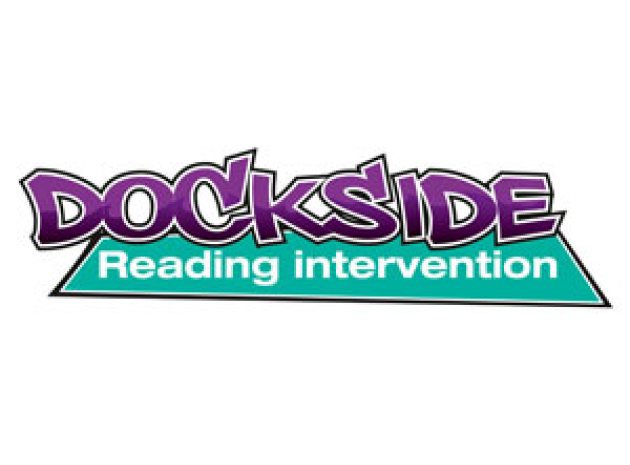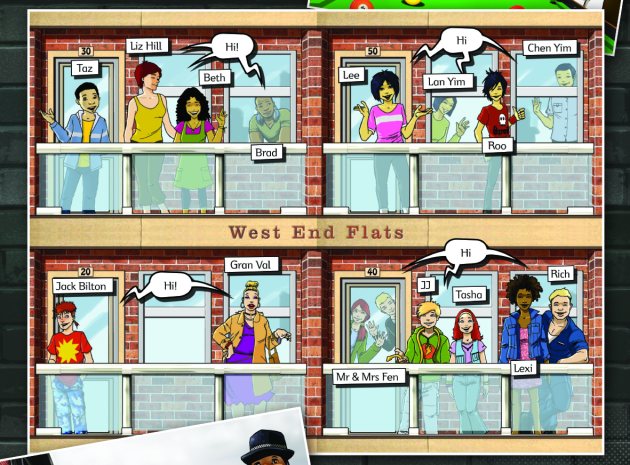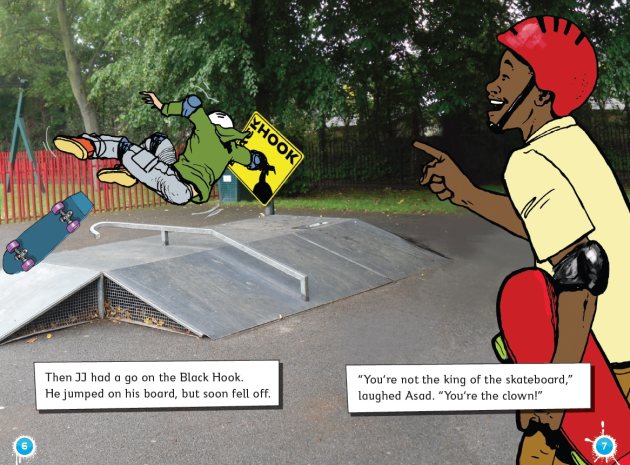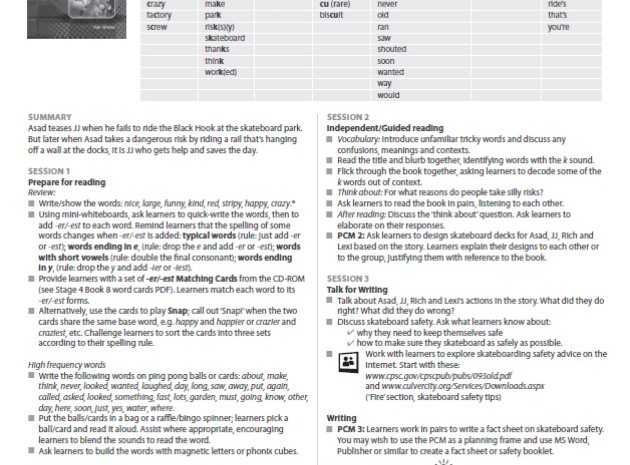What is Dockside? Well, it’s a synthetic reading intervention programme written specifically for older pupils who have not yet learnt to read, as well as for catch-up readers and EAL students. In short, it’s a simple and honest lifeline that you could implement quickly and easily into your school in order to move learners from little or no letter recognition to NC Level 3. The world of Dockside is an everyday place that features a range of resilient and likeable characters from a block of West End flats and the surrounding area. At the heart of the programme are 75 fully decodable reading books presented in six structured stages with guidance on reading age, interest age, NC level, book band and Letters and Sounds phase. The idea is that children move through the stages, learning new skills that are repeated. This represents a neat and well thought out structure, and provides a systematic framework through which pupils can work in small but speedy steps. The crisp illustrations within the books are cool, edgy and dynamic, making effective use of photo-real, graphic novel-style artwork. There’s nothing worse than a reading scheme designed for an older target audience that ends up being condescending and age-inappropriate. Fortunately this isn’t the case with Dockside, which embeds quite a selection of social and emotional elements into its well-written storylines. It’s contemporary, humourous and will capture the interest of many because it has a street-wise soap opera vibe to it; the interaction between culturally mixed characters is all very grown up. There is a potential problem with this, perhaps, because not everyone will have UK city housing estate experience as part of his or her upbringing and it will be distinctly lacking from the CV of some new arrivals. To be fair though, the Dockside creator has addressed this by providing useful guidance about how to help those with very different experiences, suggesting what you could do and how you can build on bi and trilingualism. Although Dockside has been designed to be a tightly structured and systematic 2-year programme this isn’t a hard and fast requirement. Another option is to follow a fast-track route of around 15 weeks, which assumes pupils will be reading five books per week from Stage 1 to Stage 6. You could also use Dockside in a more selective fashion, trusting your professional judgement about a particular pupil’s needs, which I think is pretty much what most teachers will do as a matter of course. To be honest this is an extremely flexible scheme that you could give the Saville Row treatment and tailor to fit any pupil. The quality of the books is one thing – but what about the help? Dockside offers clear support for teachers and TAs regardless of experience via its Teachers’ books, which are expertly written with step-by step lesson plans, record-keeping and checks. The CD-ROMs include editable activities and all the stories are included as running text and simple storyboards. There are also images of characters and the all-important assessment grids. Happily there is a teacher’s page for each book along with three photocopy masters each with a different focus: phonic, comprehension and writing. The higher stages adopt a more spelling-based focus than phonics. The lesson plans are tip-top detailing three key parts with clearly identified learning objectives and are also linked to PLTS and SEAL. If anything, I would have liked to see ideas for further challenge and other ways of using the books, particularly for homework. However, the record-keeping and assessment resources more than compensate, as they include word walls, starter cards, reading task/error analysis, comprehension questions, and test cards. This should provide you with plenty to go at and build on. The Complete Starter pack is a cracking collection of resources and includes 180 books (4 copies of each of the 45 readers in Stages 1,2 and 3); a Starter’s Teacher Book with CD-ROM and characters poster; and a copy of each of the Teacher’s Books and CD-ROMs that accompany Stages 1-3. This is all yours for £1 under £500; the price is spot-on for something this practical and well-designed, which would definitely help you navigate some troubled waters with readers lacking confidence in the sea of words. What’s even better is that the Dockside scheme is available digitally and so perfect for mobile devices. Make no mistake, this is a proven reading scheme well worth looking at. It was SEN resource of the Year in 2012 and is already being used in over 2000 schools around the country to re-engage and motivate pupils back into reading or to kick-start their reading, especially switched-off boys. If I were American I would probably whoop whoop a lot and give Rising Stars a high five for Dockside, but as I am from Nottingham I am not easily impressed and such behaviour would not be apt. Instead I’m just going to say that this resource is grand
- Browse by subject
- Maths & Science
- English & MFL
- Humanities
- The Arts
- I.C.T
- Outdoor Learning
















